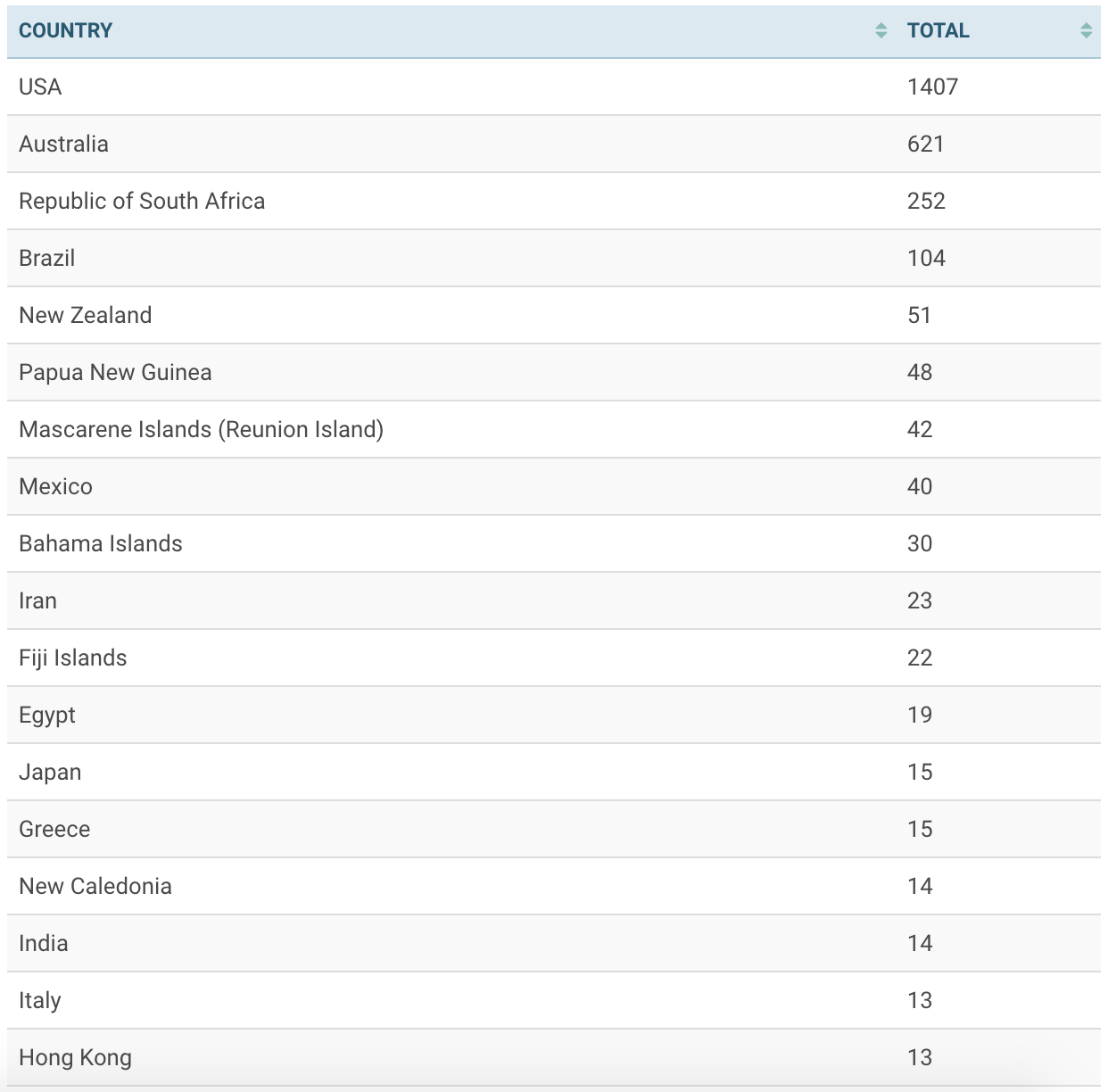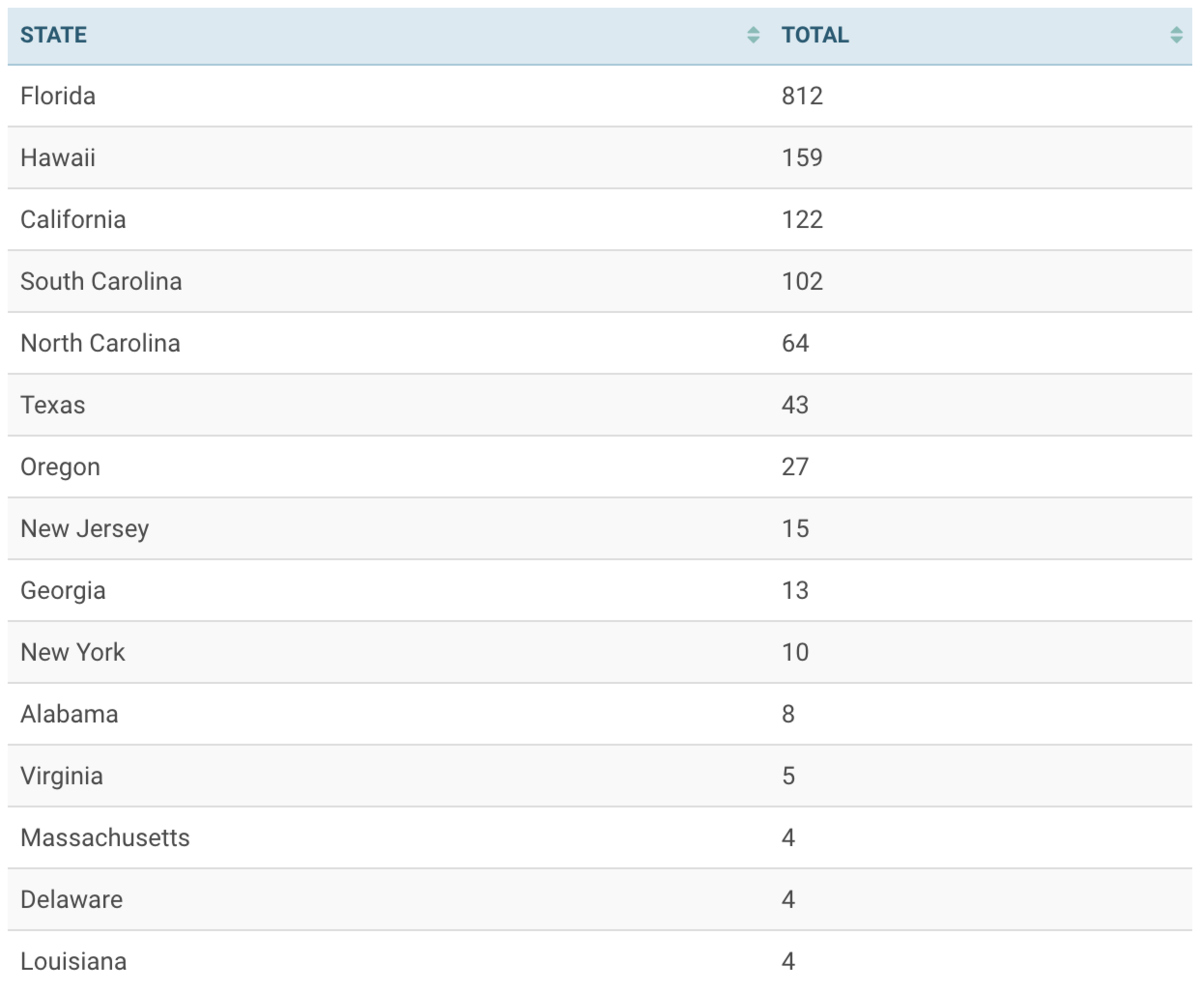GOVERNMENT TESTED & VALIDATED
In 2021, the Western Australian Government (DPIRD) released key findings from their ongoing research study proving the effectiveness of Sharkbanz technology to deter sharks in bottom fishing applications. The same tech is used in our wearable products.
Watch our Wearable Research Highlights Video to see Sharkbanz in extreme tests against Bull Sharks.
*University Validated Research*
The results from this Sharkbanz product research endeavor were quantified and verified by an independent third-party analysis group at the prestigious School of Coastal Environment Department of Marine Science at Coastal Carolina University.
PUBLISHED STUDIES ON OUR TECHNOLOGY
Since our foundation, Sharkbanz has always relied on valid science and tested technology. When our team created Sharkbanz as the world's first shark deterrent band in 2014, the science and technology behind our innovation was already firmly founded through rigorous studies conducted by marine biologists around the world.
Sharkbanz are the result of over a decade’s worth of peer-reviewed scientific research on the use of magnetic technology as an active and effective shark deterrent.
This compilation of research evidences that permanent magnets project detectable magnetic fields underwater that produce sufficient magnetic fields to elicit avoidance in a range of species including:
Sharkbanz are the result of over a decade’s worth of peer-reviewed scientific research on the use of magnetic technology as an active and effective shark deterrent.
This compilation of research evidences that permanent magnets project detectable magnetic fields underwater that produce sufficient magnetic fields to elicit avoidance in a range of species including:
- Hammerhead (S. Mokarran and S. Lewini)
- Bull (C. Leucas)
- White Sharks (C. Carcharias)
- Australian blacktip (Carcharhinus Tilstoni)
- Lemon (Negaprion Brevirostris)
- Grey Reef (C. Amblyrhynchos)
- Milk (Rhizoprionodon Acutus)
- Speartooth (Glyphis Glyphis)
For more detailed information on the science and research behind Sharkbanz's patented shark deterrent technology, please download our 'Sharkbanz Research Claims Document’ [PDF], found here.
PRODUCT TESTING
We place the highest value on product effectiveness, which is why we were the first ones in the water with sharks testing Sharkbanz prototypes before the product hit the retail shelves (Yes, that's true || No, please do not seek to swim with sharks while wearing Sharkbanz - it's not their intended purpose).
The science is real, and Sharkbanz can reduce the risk of a potentially harmful shark encounter. You can read our customer testimonials to hear stories from customers who have deterred wild (and sometimes aggressive) sharks.
Since our launch in 2014, we have continuously and successfully tested our product line on several shark species including Reef, Lemon, Blacktip and Bull Sharks. You can view these test demonstrations in our Media section. We have conducted tests together with independent third-party groups including producers from Discovery Channel and the Science Channel. Videos present a condensed version of the test demonstrations to highlight important moments and are never fabricated.
Conducting scientific trials and tests on wild sharks is challenging -- many factors are at-work (weather, costs, presence of sharks, etc.). Nonetheless, our team has been successful in creating demonstrations of our products' effectiveness, and we are very proud to have completed our first measurable study of the response of Bull Sharks to Sharkbanz deterrents.
The science is real, and Sharkbanz can reduce the risk of a potentially harmful shark encounter. You can read our customer testimonials to hear stories from customers who have deterred wild (and sometimes aggressive) sharks.
Since our launch in 2014, we have continuously and successfully tested our product line on several shark species including Reef, Lemon, Blacktip and Bull Sharks. You can view these test demonstrations in our Media section. We have conducted tests together with independent third-party groups including producers from Discovery Channel and the Science Channel. Videos present a condensed version of the test demonstrations to highlight important moments and are never fabricated.
Conducting scientific trials and tests on wild sharks is challenging -- many factors are at-work (weather, costs, presence of sharks, etc.). Nonetheless, our team has been successful in creating demonstrations of our products' effectiveness, and we are very proud to have completed our first measurable study of the response of Bull Sharks to Sharkbanz deterrents.
SHARKBANZ BULL SHARK RESEARCH STUDY (2018)

Introduction
On the dates of November 15-17, 2017, The
Sharkbanz Team, in association with Discovery Canada and Sharkdefense Technologies, LLC., conducted a comparative study with Sharkbanz products on wild bull sharks in Bimini, Bahamas. The Bull Shark (Carcharhinus leucas) is responsible for a substantial number of attacks in the USA and globally. The team’s goal was to test the hypothesis that Sharkbanz technology creates an effective barrier and deterrent, thus reducing bull shark attacks even under the most extreme test scenarios.
Sharkbanz Team, in association with Discovery Canada and Sharkdefense Technologies, LLC., conducted a comparative study with Sharkbanz products on wild bull sharks in Bimini, Bahamas. The Bull Shark (Carcharhinus leucas) is responsible for a substantial number of attacks in the USA and globally. The team’s goal was to test the hypothesis that Sharkbanz technology creates an effective barrier and deterrent, thus reducing bull shark attacks even under the most extreme test scenarios.
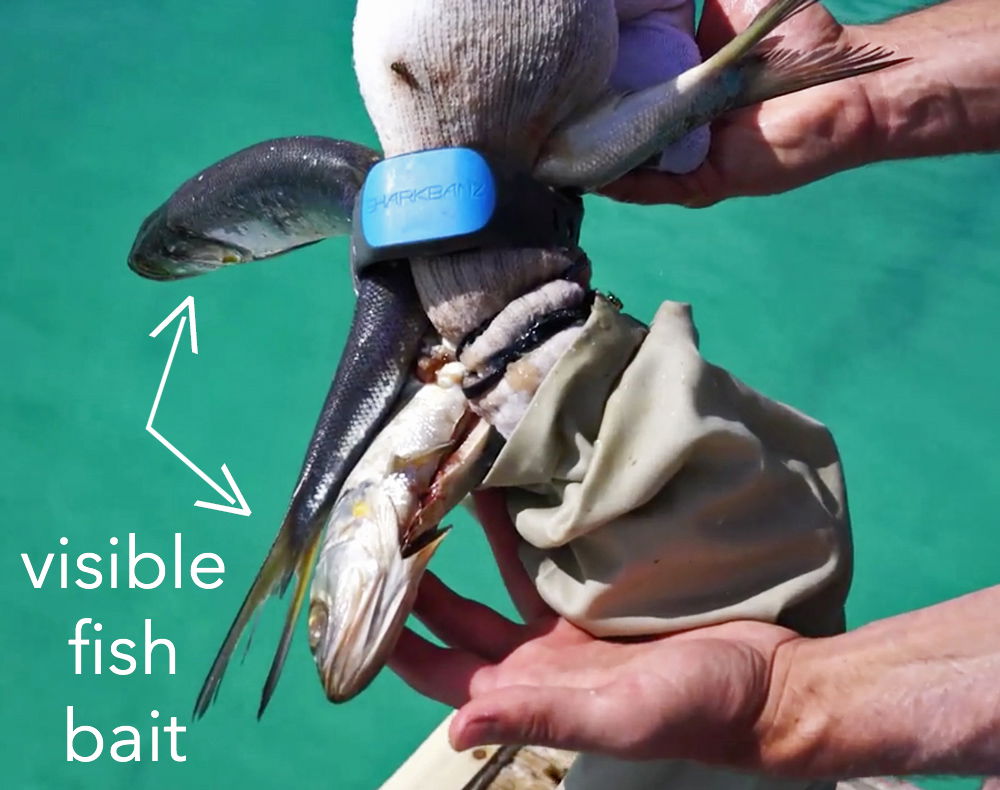
Worst-Case Scenarios
Between 5 and 15 Bull Sharks were present during the experimental trials. The study consisted of trials that simulated a worst-case scenario. Each trial was conducted with the experimental treatment (i.e. Sharkbanz or Sharkleash), and then replicated exactly with the control (i.e. no Sharkbanz). Bait chunks (Bonita, Sarda sarda) were intermittently distributed around the human model (i.e. Bernie) to continuously stimulate and attract the sharks to interact with the treatment and control. During all trials bait chunks (approximately 300 g) were placed into the human model at the foot (i.e. inside the sock) to attract the sharks to bite.
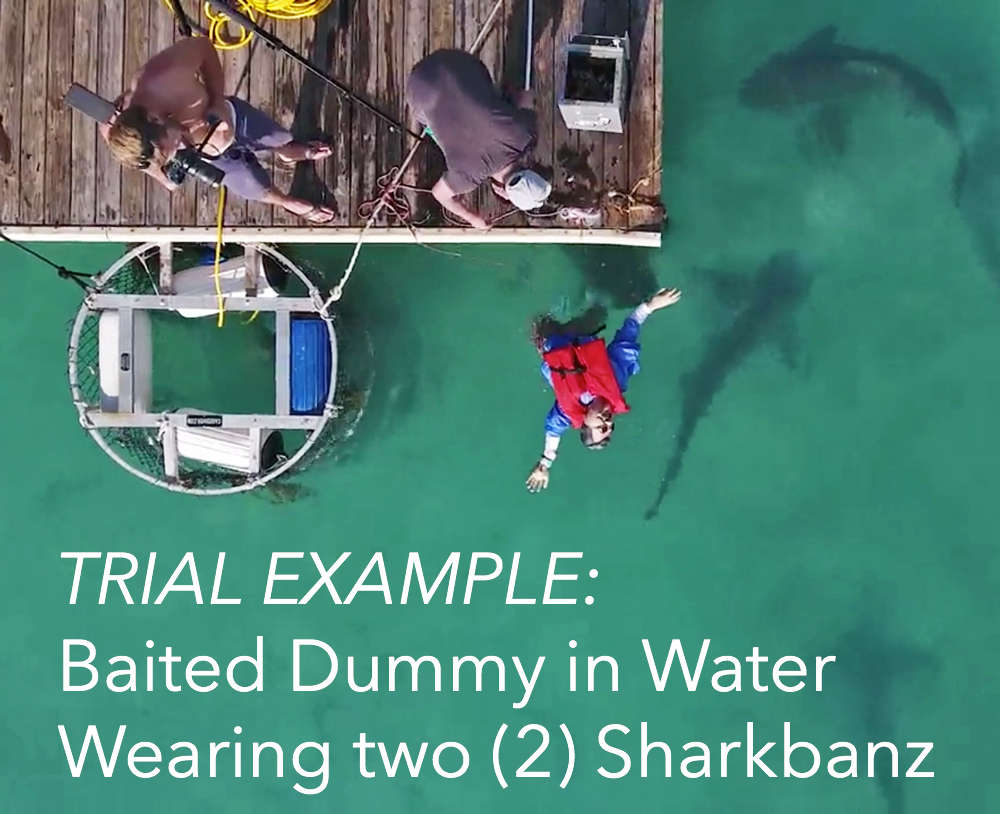
Trial Methods
Various treatments were tested including control (i.e. no Sharkbanz or Sharkleash), Sharkbanz, or Sharkleash. A total of 25 trials were conducted with the treatments (i.e. Sharkbanz and Sharkleash) and control resulting in 2 hr 38 min of soak time exposed to the bull sharks with a total of 1235 approaches and observed behaviors. During the 2 hr 19 min with the treatment, there were zero attacks on the human model. Trials with the control were stopped once the human model was attacked. During the 18 minutes of trials with the control, the human model was attacked approximately every 46 seconds.
Research Results
The current preliminary study is the first conclusive comparative study demonstrating the effectiveness of Sharkbanz products against bull sharks. The results suggest that wearing a Sharkbanz or using a Sharkleash significantly reduces the probability of bull shark interactions (i.e. attack or bite as defined in the experiment) in a similar situation where a human leg is suspended in the water column from a floating object (like a surf board).
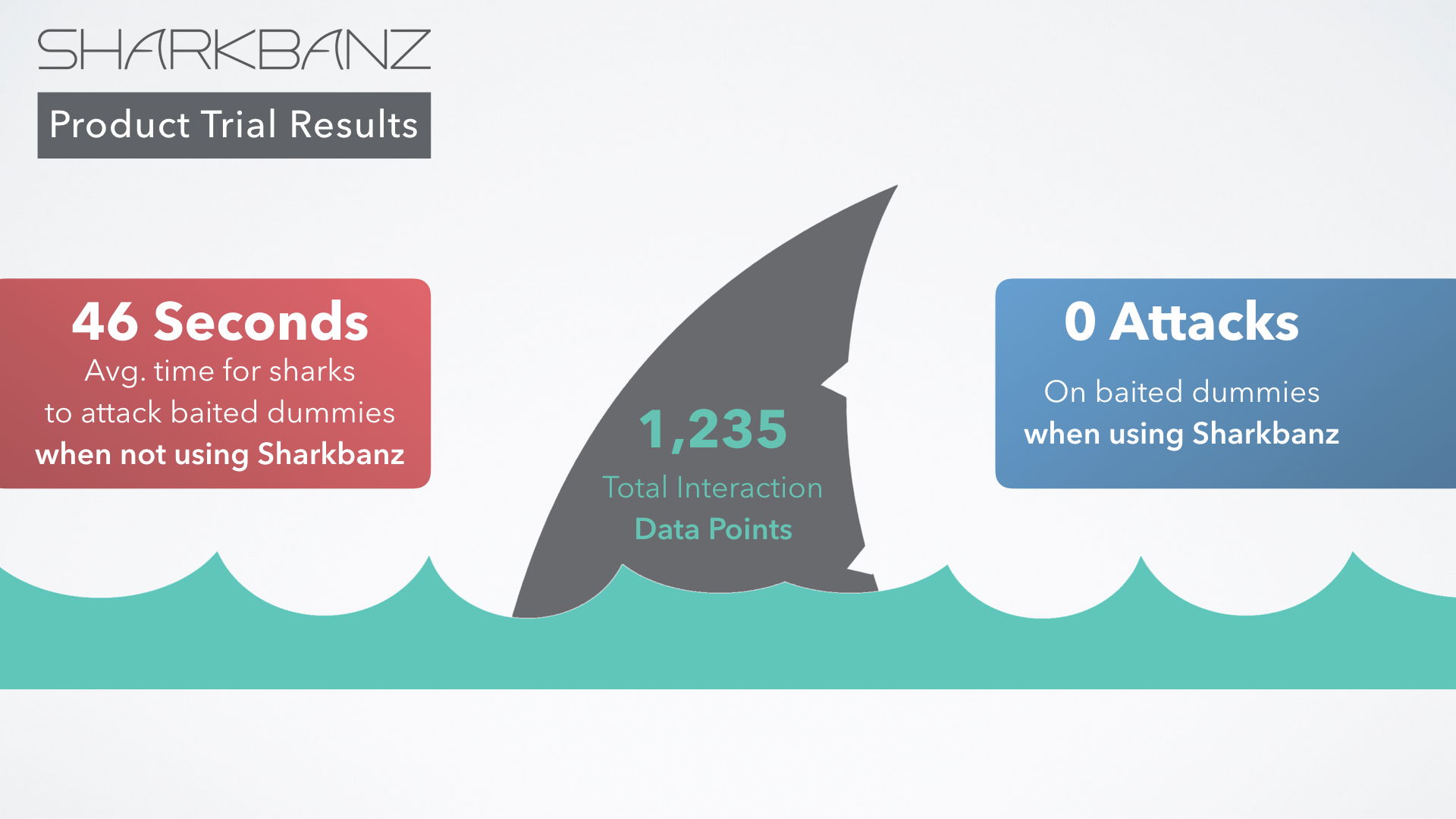
For a detailed PDF copy of our scientific paper on the study of Sharkbanz deterrents on Bull Sharks, please click here.

Watch our research test video to view results from our various trials. We put our technology to the ultimate of tests.
RELEVANT SHARK AND BITE / ATTACK STATISTICS
Sharkbanz are designed to prevent the most common type of harmful shark encounter, which is categorized as an unprovoked attack. More specifically, Sharkbanz are an excellent way to deter predatory shark species from hit-and-run bites / attacks, which are typically investigative in nature but can also be aggressive, as sometimes seen by Bull, Tiger and Great White Sharks.
Despite what most people think when they imagine dangerous sharks (basically Jaws and our fear of Great Whites), the Bull Shark is actually responsible for the most number of bites, attacks and injuries worldwide due its prevalence, near-shore habitat and aggressive nature.
Despite what most people think when they imagine dangerous sharks (basically Jaws and our fear of Great Whites), the Bull Shark is actually responsible for the most number of bites, attacks and injuries worldwide due its prevalence, near-shore habitat and aggressive nature.
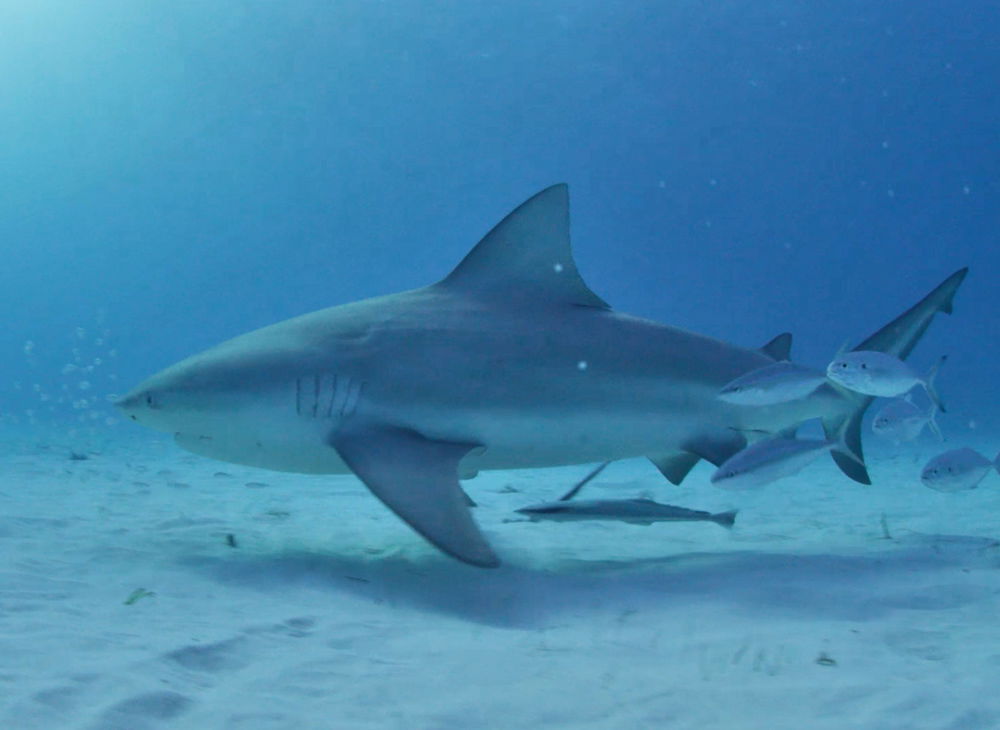
Bull Shark Overview
The Bull Shark (Carcharhinus leucas), also known as the Zambezi shark (informally "zambi") in Africa, is a requiem shark commonly found worldwide in warm, shallow waters along coasts and in rivers. The Bull Shark is known for its aggressive nature, predilection for warm shallow water, and presence in brackish and freshwater systems including estuaries and rivers.
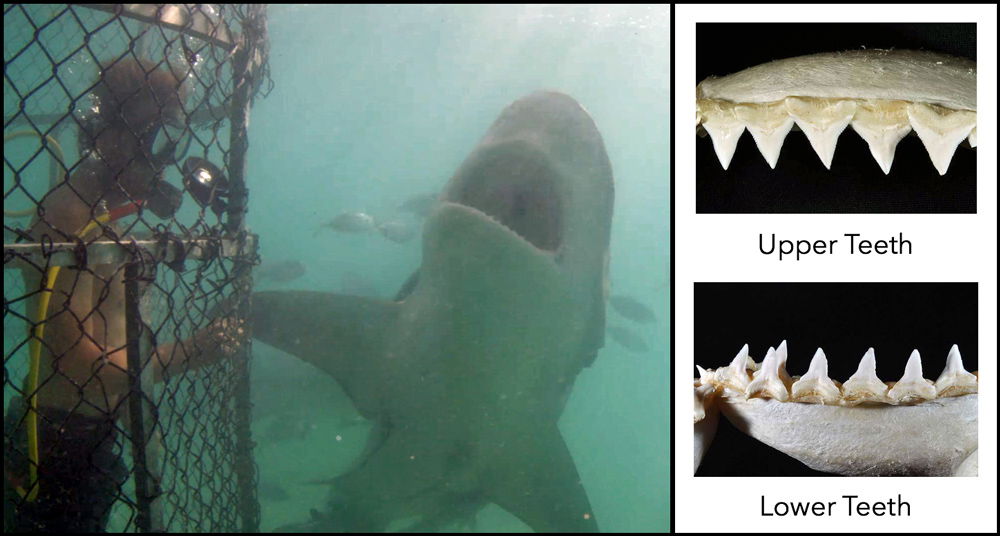
Bull Shark Characteristics
Bull sharks get their name from their short, blunt snout, as well as their confrontational disposition and a tendency to head-butt their prey before attacking. They are medium-size sharks (7 to 11.5 ft || 200 to 500 lbs), with thick, stout bodies and long pectoral fins. Fast, agile predators, they will eat almost anything they see, including fish, dolphins, and even other sharks. They often attack people inadvertently or out of curiosity.

Bull Shark Habitat
The Bull Shark is diadromous, meaning they can swim between salt and fresh water with ease. They are found cruising the shallow, warm waters of all the world’s oceans. While they usually live near high-population areas like these tropical shorelines, they are not bothered by brackish and freshwater, and will venture far inland via rivers and tributaries. Subsequently, there are many areas (around the world) where humans can and do encounter Bull Sharks, including Florida -- the location with the highest total number of shark bite / attack incidences.
Following normal trends, Florida had the most of unprovoked attacks in the USA (2017), representing 35% of the worldwide total.
The Bull Shark along with the Spinner and Hammerhead Shark account for the majority of shark species involved in confirmed unprovoked attacks in the state of Florida -- all species that have shown an avoidance reaction to Sharkbanz' deterrent technology.
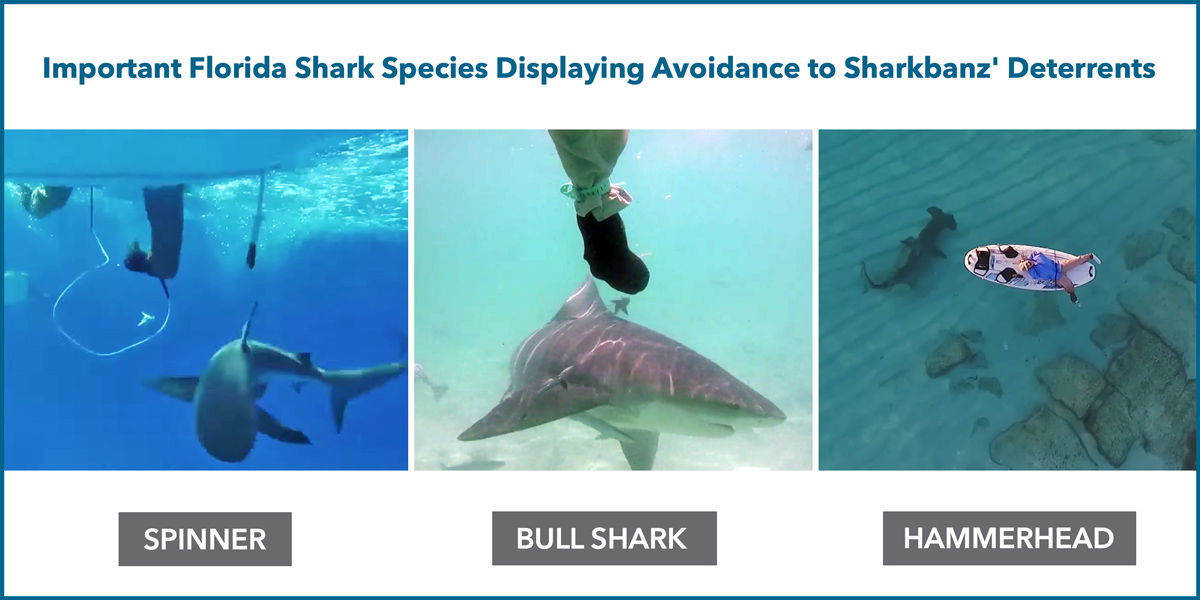
Sharkbanz are designed to reduce the risk for the most common shark encounters
As evidenced below, the majority of the world's shark attacks / bites are accounted for in the United States (particularly in FL), where Bull Sharks and other medium to smaller size shark species are responsible. Sharkbanz can create avoidance behavior in larger shark species (Tiger, Great White) to reduce the risk for swimmers, surfers and beachgoers in areas where those species live as well.
We are entering their environment, so it's best to educate ourselves on best practices to avoid shark encounters.
Most of all, enjoy the ocean! The greatest risk is to take no risk.
all images and information below courtesy of The International Shark Attack File
We are entering their environment, so it's best to educate ourselves on best practices to avoid shark encounters.
Most of all, enjoy the ocean! The greatest risk is to take no risk.
all images and information below courtesy of The International Shark Attack File

